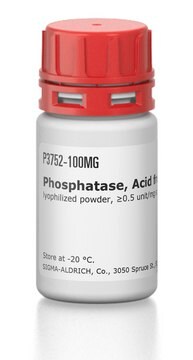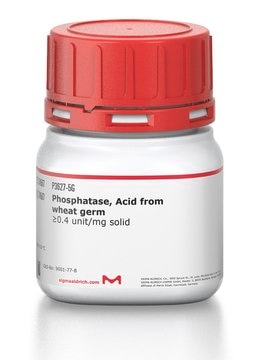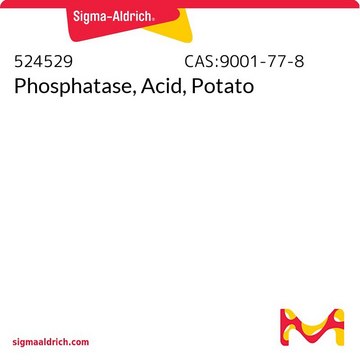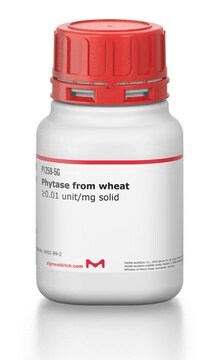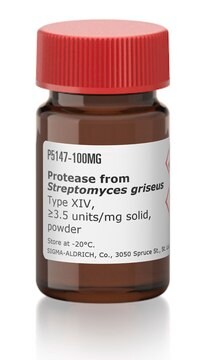P1435
Phosphatase, Acid from sweet potato
ammonium sulfate suspension, ≥10.0 units/mg protein (modified Warburg-Christian)
Synonym(s):
(Orthophosphoric-monoester phosphohydrolase [acid optimum] )
About This Item
Recommended Products
form
ammonium sulfate suspension
Quality Level
specific activity
≥10.0 units/mg protein (modified Warburg-Christian)
secondary activity
≤9.9 units/mg protein ATPase
mol wt
110 kDa
storage temp.
2-8°C
InChI
1S/C6H10O2/c1-3-4-8-5-6(2)7/h1,6-7H,4-5H2,2H3
InChI key
GZCWLCBFPRFLKL-UHFFFAOYSA-N
General description
Application
Biochem/physiol Actions
Unit Definition
Physical form
Signal Word
Danger
Hazard Statements
Precautionary Statements
Hazard Classifications
Resp. Sens. 1
Storage Class Code
10 - Combustible liquids
WGK
WGK 3
Flash Point(F)
Not applicable
Flash Point(C)
Not applicable
Personal Protective Equipment
Regulatory Listings
Regulatory Listings are mainly provided for chemical products. Only limited information can be provided here for non-chemical products. No entry means none of the components are listed. It is the user’s obligation to ensure the safe and legal use of the product.
JAN Code
P1435-100UN:
P1435-500UN:
P1435-2.5KU:
P1435-VAR:
P1435-BULK:
Certificates of Analysis (COA)
Search for Certificates of Analysis (COA) by entering the products Lot/Batch Number. Lot and Batch Numbers can be found on a product’s label following the words ‘Lot’ or ‘Batch’.
Already Own This Product?
Find documentation for the products that you have recently purchased in the Document Library.
Customers Also Viewed
Articles
Instructions for working with enzymes supplied as ammonium sulfate suspensions
Our team of scientists has experience in all areas of research including Life Science, Material Science, Chemical Synthesis, Chromatography, Analytical and many others.
Contact Technical Service
